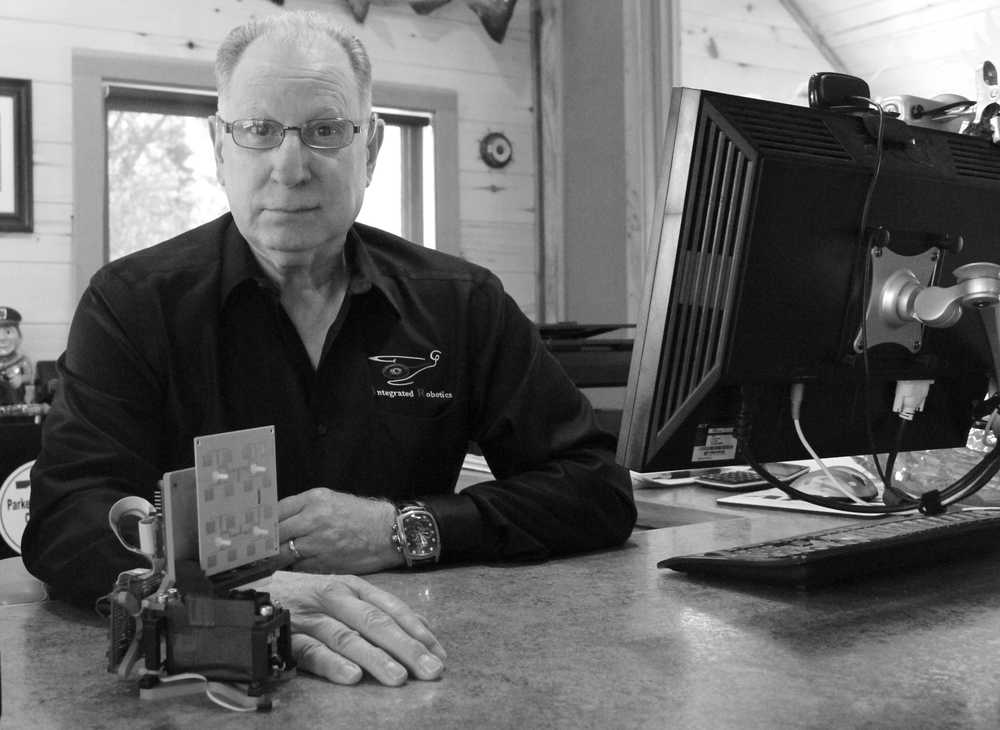The technology has arrived — all 12.5 ounces of it.
John Parker, president and COO of Integrated Robotics Imaging Systems in Kenai, received collision avoidance radar for small drones last week.
Parker said the radar is his contribution to the Federal Aviation Administration’s goal with unmanned aerial vehicles — to operate them safely in national airspace.
Researchers at the University of Denver began designing the radar specifically for small UAVs or drones in 2008. In early April, Parker acquired exclusive patent rights for the technology.
“Our intention is to be first to market with this radar, and I believe we’ll be able to do that,” Parker said. “And then make it available for everybody that has an interest in this technology.”
No other company in the industry has collision avoidance radar, he said. Right now the UAV industry is working with two types of systems — automatic dependant surveillance broadcast and traffic collision avoidance systems.
“They only interrogate other systems that are like it,” Parker said. “In other words each plane would have to have a TCAS on it or ADSB or regular transponder. So they can’t see any aircraft or anything out there that doesn’t have that on it.”
He said the radar his company now possesses can be used on virtually any small UAV to meet FAA requirements.
“This radar is the solution that all of our companies that are fielding UAVs of this type and size need,” Parker said.
He plans to integrate the radar with an Infotron coaxial rotor UAV. A coaxial rotor UAV has two sets of blades, one stacked on top of the other, that spin in opposite directions. Parker said that type of rotor system makes the UAV more stable than other designs.
“It’s a very stable platform and that’s what we need up here,” Parker said. “Because we’re going to fly in bad weather a lot.”
He said current small UAVs have the rotors on the same plain so the drone is subject to turbulence, which changes video stability. He said compensations are made with programming and changing rotors’ revolutions per minute. However, the additional energy used could be used instead to fly farther and get more data.
The UAV will be battery powered with a one-hour endurance. In the future Parker plans to look into powering the UAV with fuel cells and expects to extend the UAV endurance to 10 hours, if successful.
Parker is working to finalize the shipping of the UAV from Infotron’s headquarters in France. Integrated Robotics, which Parker started in 2011, is also the North American distributors and manufactures representative for Infotron.
During the next six to 10 months Parker will be working on the radar and drone integration. He said the key is “sense and avoid.” The plan is to develop the product so that when an object is detected, data would be transferred to a ground pilot and if the pilot didn’t change the UAV’s course, it would move itself. He will be seeking certification of the product under FAA protocols. If all goes according to plan, Parker said the radar should be finalized for market within 18 months.
While Parker is unsure of how much the radar will cost, he wants to make it affordable for the UAV industry.
“This is the type of technology that I believe that Alaska needs,” Parker said.
A gimbal camera system made by DST Control, a Swedish company, will also become part of the UAV system. He said the camera has been shipped to Infotron to be integrated with the UAV specific to Parker’s operations.
Kaylee Osowski can be reached at kaylee.osowski@peninsulaclarion.com.

